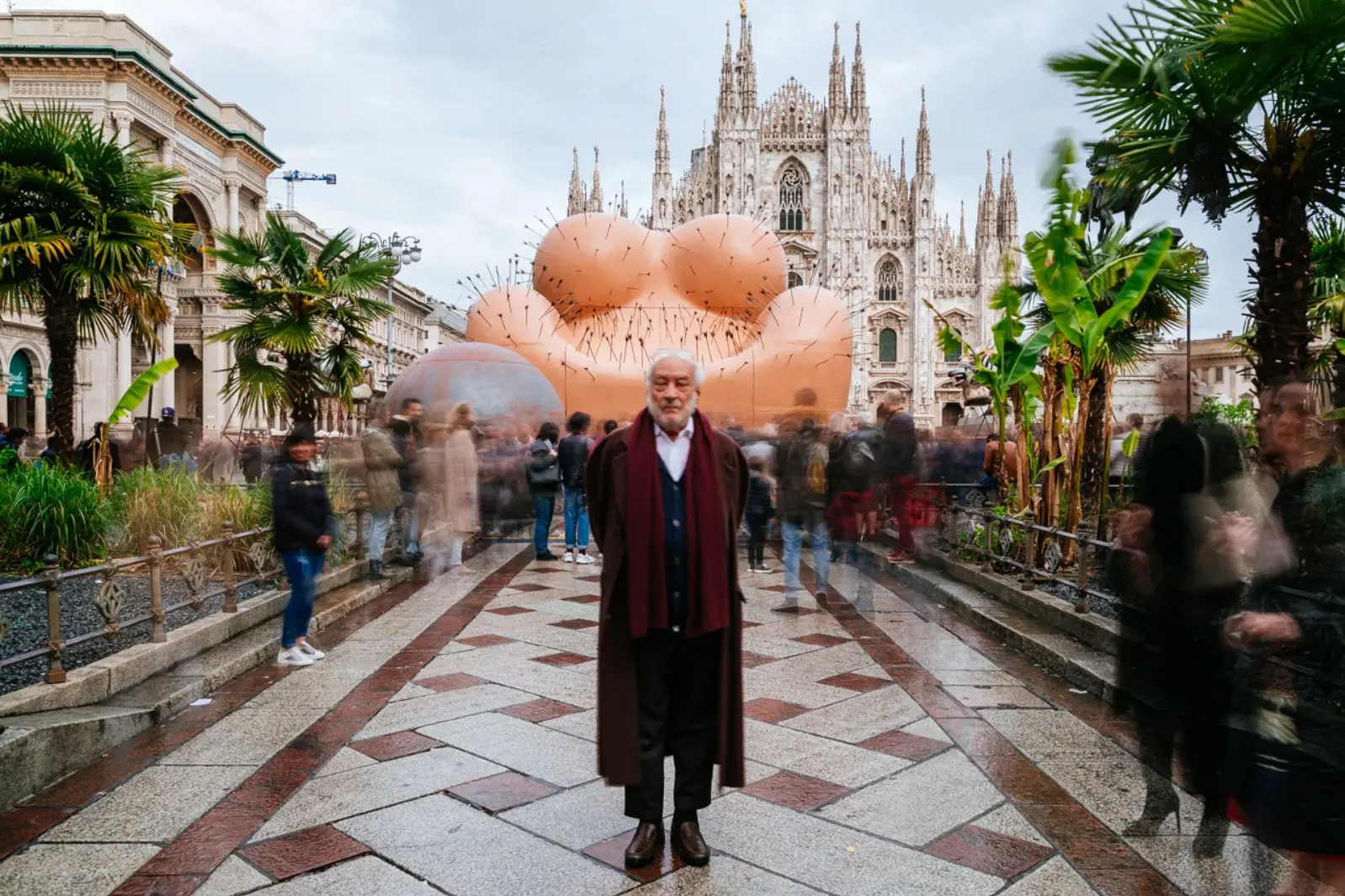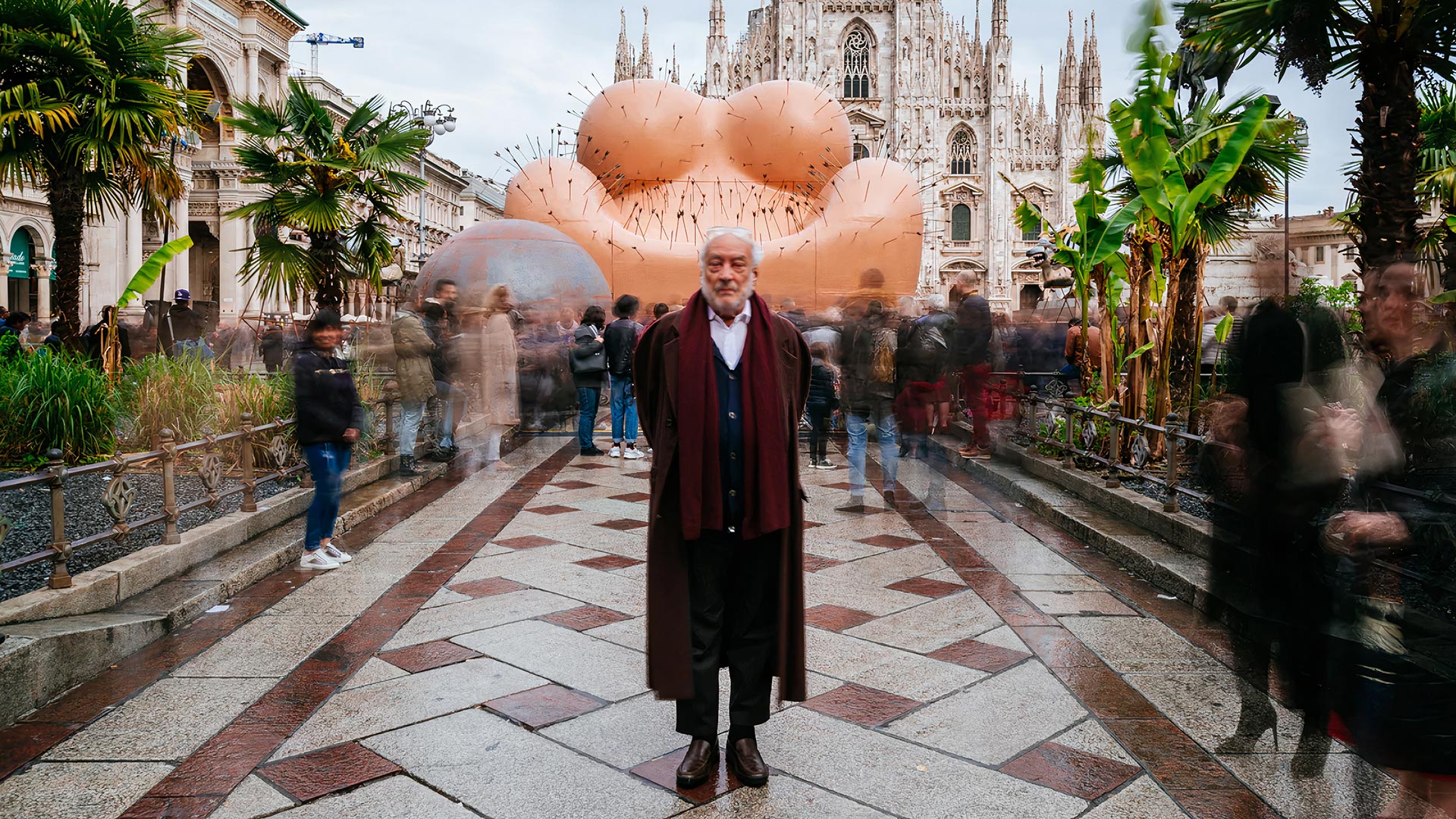
Gaetano Pesce is born in 1939 in La Spezia, Italy. He lives and works in New York. His work spans art, design and architecture. In a career spanning fifty years, guided by a constant drive towards innovation and experimentation, Gaetano Pesce, architect, artist and designer, has created public and private projects in the United States, Europe, Latin America and Asia, in the fields of architecture, town planning, interior design, and industrial and exhibition design. Herbert Muschamp, the authoritative architecture critic, presented Pesce’s multidisciplinary work as “the architectural equivalent of a brainstorm” and it is displayed in the permanent collections of the most important museums in the world, including the MoMA, the New York Metropolitan Museum, the Victoria and Albert Museum in London, the Centre Georges Pompidou in Paris, the Vitra Museum in Germany, the Montreal Museum of Art and various other museums in Japan, Portugal and Finland. Pesce has been awarded diverse prizes, including the prestigious Chrysler Award for Innovation and Design in 1993, Architektur und Wohnen Designer of the Year in 2006 and the Lawrence J. Israel award from the Fashion Institute of Technology in New York in 2009.
His approach to design has gone down in history and his works have been celebrated in exhibitions of outstanding importance, such as Italy: The New Domestic Landscape held at the MoMA in 1972; the retrospective Gaetano Pesce: Le Temps des Questions, organised in 1996 in the Centre Georges Pompidou; Pushing he Limits, held in the Philadelphia Museum of Art in 2005; GaetanoPesce: Il rumore del tempo, at the Milan Triennale, also in 2005; the retrospective Il Tempo della Diversitá, at the MAXXI in Rome in 2014. Companies that have carried out his projects include Cassina, B&B Italia, Bernini, Knoll International, Venini, Swarovski, Meritalia and Zerodisegno.
Born in La Spezia in 1939, Pesce studied architecture at Venice University and when he was young, wrote a manifesto defending the right to incoherence in art, the need for change, to be free, and not to repeat oneself. During the course of the following 28 years, Pesce taught at Institut d’Architecture et d’Etudes Urbaines in Strasburg, Carnegie Mellon in Pittsburgh, the Accademia Domus in Milan, the Hong Kong Polytechnic, the School of Architecture in São Paulo and the Cooper Union in New York, where he moved in 1980 after having lived in Venice, London, Helsinki and Paris. In Pesce’s production, the borders between art, design and industry become irrelevant because art is also a product, it is the creative reply to the needs of the times we are living in. His continuous research in the field of advanced materials, languages and technology has been translated into iconic productions such as the series Up (1969), made of seven voluptuous-shaped chairs, including Up #5, La Mamma, the first industrial design product bearing a political message, that of denouncing the condition of women in the world. In 2002 the design collection Nobody’s Perfect, made with polyurethane elastic resin, marked the birth of Pesce’s idea of “diversified series”: the creative choices of craftsmen that produce the pieces, giving them an unrepeatable colour and texture. Pesce refuses repetition and abstraction but he loves colour, new materials, political content, “misdeeds”, provocations, the feminine, the figurative, the human and all our five senses. His restructuring of the seat of the advertising agency TWBA/Chiat/Day in Manhattan (1995) was described by the New York Times as “an extraordinary work of art that clearly stands out from the lucid rigour of the aesthetics we have ended up associating with modernity.”
Built between 1989-1993 in Osaka, Japan, his Organic Building, the façade of which is a vertical garden, has been declared a public monument by the city. In 2011 Pesce presented the installation L’Italia in Croce, displayed at the Triennale Museo del Design in Milan and at the Venice Biennale. In 2012, at the David Gill Gallery in London he exhibited Six Tables on Water, a collection of tables-landscapes representing the surface, density and changing colours of water in its diverse forms: oceans, lagoons, ponds, and puddles, from a bird-eye’s view. In 2016 in Florence, it was with Maestà Tradita (exhibition at Museo Novecento and an installation in Piazza S. Maria Novella) that once again Pesce denounced the difficult conditions of women in contemporary society and the underlying hypocrisy that often undermines change. The huge figure of a woman covered in what appear to be sheds of meat, resting on a throne that evokes the shapes of UP5, symbolizing the vain, empty idea of splendor. In 2017 at the Museo del Vetro in Murano, Gaetano Pesce presented the result of his glass experiments made from 1988 to 1992 at C.I.R.V.A in Marseille, which led to the invention of five new revolutionary techniques of processing this material. In the same year, at the historical complex of Palazzo Ducale in Mantua, the exhibition “Architecture and Figuration” celebrates the artist’s visionary creativity with the display of some of his most relevant architectural projects. In 2018 the Palazzo della Ragione in Padua, Italy, held a large retrospective of his work. In 2019 for Milan Design Week Gaetano Pesce installed in the Piazza del Duomo a 26 foot tall version of his infamous UP 5_6 chair, which celebrated its 50th year anniversary that year. In 2021, Gaetano Pesce had his first solo tour exhibition in Asia. Now in 2022, Gaetano Pesce created the show space for Matthieu Blazy’s sophomore outing at Bottega Veneta in Milan, comprising a poured resin floor and 400 unique chairs.
Photo credits Gabriele Zanon








